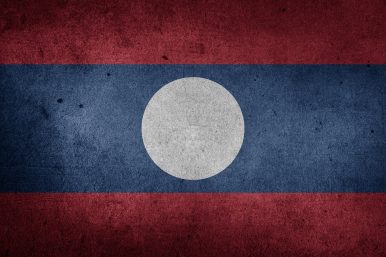By Eleanor Albert
Laos, a country of 6.8 million people roughly the size of China’s southern autonomous region of Guangxi, is often overlooked in China’s outreach to Southeast Asia. This year marks the 10-year anniversary of the upgrading of Chinese-Lao relations to a comprehensive strategic cooperative partnership and in that spirit, officials launched the Visit China-Laos 2019 initiative to promote tourism. Historically, China’s involvement in the country has been more contained to the northern provinces closest to the border, but investment projects in transportation infrastructure, a border economic zone, hydropower dams, schools, and military hospitals indicate an amplification of Chinese ties.
What does Laos bring to the table? The small landlocked nation is geographically important. Not only does the Mekong River run through Laos, making hydropower a potentially lucrative industry, but it is also endowed with underdeveloped resources, including minerals and rubber. From a more strategic standpoint, boosting connectivity via roadways and high-speed passenger and freight railways will be beneficial for distributing Chinese goods to Lao markets and injecting investments into tourism and real estate sectors, as well as creating a physical link via central Laos to Thai markets, ports, and ultimately the Andaman Sea.
Yet, as much as Laos’ geography vis-a-vis the region increases its appeal as a destination for investment, its mountainous topography presents challenges in practice. The China-Laos railway that runs from the northern border to the central capital of Vientiane will cross more than 150 bridges and pass through almost half as many tunnels, two of which were recently completed.
While the railway has become emblematic of China’s foray into Laos, other Belt and Road Initiative projects are also underway, including further developments of the Nam Ou River hydropower plant and the recent approval a $40 million loan by the Asian Investment Infrastructure Bank (AIIB) to revamp a section of a road in northern Laos, the AIIB’s first project in Laos. Separately, China also financed, built, and launched a satellite for Laos, which joined the ranks of Bolivia, Nigeria, Pakistan, and Venezuela who have also received Beijing’s support getting a telecommunications satellite.
Overall, China is Laos’ largest foreign investor and aid provider, as well as its second largest trade partner. In a country where subsistence farming accounts for a sizable portion of the economy, China’s engagement could bring about transformative opportunities. But at what cost?
China’s preferred financing for projects is dominated by extending long-term lines of credit. For example, Beijing is set to cover 70 percent of the China-Laos railway with Laos responsible for the remainder, largely covered by loans from Chinese banks. But in Laos, public debt has grown to more than 65 percent of GDP. China’s general financing approach has been called “debt diplomacy,” especially in circumstances where China’s funds are funneled to countries whose economies may already bear significant debt burdens or may be unable to honor repayment schemes. (Sri Lanka, facing significant debt, leased a port to China in 2017 and Venezuela owes China an estimated $20 billion.)
Despite the headline catching projects, China is not the only neighbor that matters to Laos. Thailand remains the country’s largest trade partner, while its political ties to Vietnam run deep, dating back to the Vietnam War and the emergence of the Pathet Lao, a communist movement and organization that gave rise to the ruling Lao People’s Revolutionary Party.
Still, China’s presence in Laos is undeniable. Xi Jinping visited Laos in 2017, marking the first international trip of his second term and the first visit to the country by a Chinese leader since 2006. Symbolism aside, China’s relationship is motivated by both potential economic development and an opportunity to take a more active role in shaping geopolitical dynamics in a region that Beijing has long viewed as its backyard. The real question moving forward will be if the influx of investment pays off and how China will work with Vietnam and Thailand, two neighbors who may not have the same global clout that China does, but the two continue to wield influence in Laos.

No comments:
Post a Comment